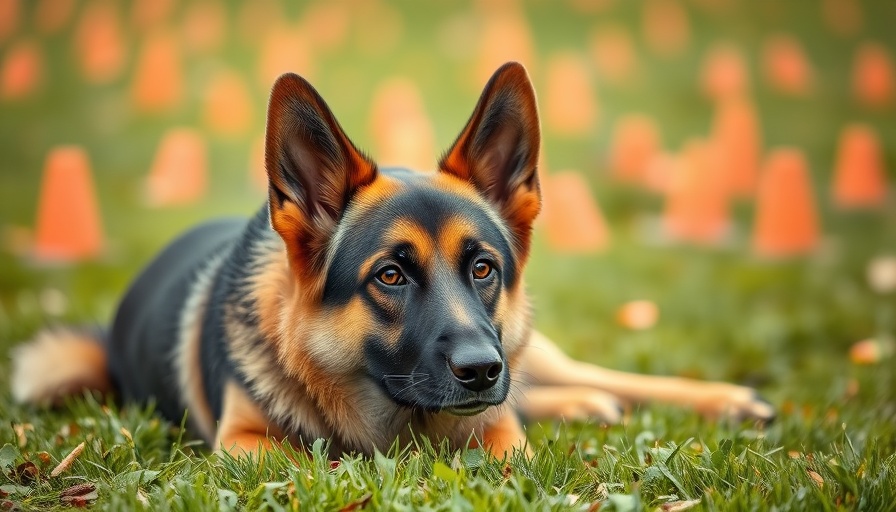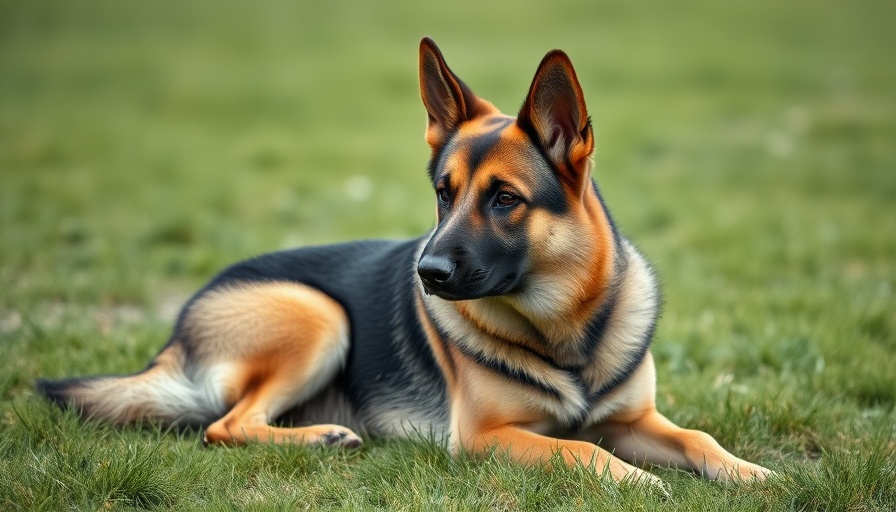
The Importance of Dog Grooming: More Than Just Aesthetics
Many pet owners might think of dog grooming as a simple task of keeping their dog's coat neat and tidy. However, grooming is essential for a dog’s overall health and well-being. Regular grooming reduces the risk of skin infections, promotes a healthy coat, and allows pet owners to bond with their furry friends. The act of brushing and bathing not only keeps dogs looking their best but also provides a valuable opportunity to check for any abnormalities such as lumps, bumps, or skin irritations.
Essential Tools for Successful Grooming
Choosing the right tools is the first step in effective dog grooming. A proper at-home grooming kit should include:
- Brushes and Combs: Utilizing the correct type of brush is crucial. Short-haired breeds benefit from a rubber curry brush to remove loose fur while stimulating the skin, whereas long-haired breeds typically require a slicker brush to detangle and manage mats. A metal comb is also essential for fine-tuning and getting rid of stubborn knots.
- Shampoos and Conditioners: Dog owners must invest in products specifically designed for canine skin. Using human shampoos can lead to skin irritation because of differing pH levels. Natural options, such as oatmeal-based shampoos, are gentle and effective for dogs with sensitive skin.
- Nail Trimmers: Nail care is essential, as long nails can lead to discomfort or improper walking. Trimming nails carefully, taking care to avoid the quick, can enhance your dog's comfort. For particularly fearful pups, an electric nail grinder could serve as a quieter alternative.
- Ear Cleaning Supplies: For dogs with floppy ears, routine ear cleaning is vital. Special ear solutions paired with cotton balls should be used to prevent infections.
- Dental Care Tools: A dog’s dental health is often overlooked, but regular brushing can prevent serious health issues. Finger brushes or long-handled dog toothbrushes, along with enzymatic toothpaste, provide the best results.
Steps to Grooming Your Dog at Home
Once you have equipped yourself with the correct tools, it's time to foster a grooming routine. Follow this step-by-step approach for effective at-home grooming:
- Start with Brushing: Whether your pup has short or long hair, begin by brushing to remove tangles and loose hair. Short-coated breeds will benefit from circular brushing, while long-haired breeds require gentle strokes to minimize breakage.
- Bath Time: Use lukewarm water and apply dog-friendly shampoo, thoroughly lathering your dog's coat while avoiding the eyes and inside the ears. Rinse well and use conditioner to enhance coat softness.
- Nail Trimming: Take your time during this often-dreaded task. Introduce your dog to the clippers gradually, rewarding them with treats after each achieved nail trim.
- Ear and Dental Care: Clean your dog’s ears gently and brush their teeth to promote oral health.
- Final Touches: After drying your pet, give their coat one last brush. Check their eyes and nose, ensuring there are no signs of unusual discharge.
Building A Connection Through Grooming
While keeping your dog clean and tidy is essential, it’s also about building trust. Grooming can be a soothing exercise for both you and your pet. Regular sessions can help your dog feel comfortable with individual touch and care, adding to the bond you share.
Future Trends in Pet Grooming
The pet grooming industry is evolving continually, with natural and organic grooming products gaining popularity due to a growing awareness of pet health. Additionally, tech innovations such as mobile grooming services and DIY grooming kits that come with tutorial videos are transforming how pet owners approach grooming.
Final Thoughts on Dog Grooming
Grooming is not just about aesthetics; it’s essential for your dog’s health and comfort. By equipping yourself with the right tools and knowledge, you can create a routine that benefits both you and your furry companion. Make grooming a rewarding activity through patience and kindness, and enjoy the many benefits it brings.
If you’re looking for the perfect grooming tools, check out our recommendations and invest in your dog’s grooming success!
 Add Row
Add Row  Add
Add 




 Add Row
Add Row  Add
Add 

Write A Comment